We don’t yet know we’re on borrowed time. On the last day of vacation, at Maui Ocean Center, Hawaii’s top-rated Aquarium, shafts of sunlight stripe the huge “open ocean” exhibit. No way to know how personally symbolic this place will become for my husband, Dreamer, and me.
We marvel at the glassy viewing tunnel’s scope: 240 degrees. Hawaiian marine denizens, some of them found nowhere else in the world, thrive in 750,000 gallons of brine.
No facemask, wetsuit, or flippers needed. Bypass oxygen tanks. Inside this acrylic tunnel gasps and exclamations—in several languages—lace the air. The place is packed. Humid. Exciting.
A gaping boy stretches out his arms.
First Fathom
“Fathom,” from the Anglo-Saxon word faetm, means, “to embrace.” The ancients reckoned measurements by using average-sized human body parts. Fingertip to fingertip from a man’s outstretched arms—roughly 6 feet—constituted a fathom.
Fathom, as verb, is another kettle of fish. Who can fathom how this plastic tunnel withstands seawater’s monumental weight? And imagine the upkeep: giant squeegees, vats of Windex, evening workers with rags vamoosing spectator handprints.
Thick curves reflect and exaggerate colors, shapes, light.
We sink onto a side bench in the tunnel.
Wide-eyed, Dreamer and I gaze and gaze.
Sharks surround us.
We breathe in menace
and our reflections morph.
Like funhouse mirrors, proportions dance: Balloon, telescope, skew—massive fish with their spooky, lidless eyes loom, then shrink, appear smaller than we are. A diver lurches alongside the tunnel wall.
This encircling lens
dwarfs the diver who looks
about nine, lugging
his ponderous barrel device
like an old insult. Lancing
sunlight, the rationed sea,
all these motes, in freefall.
Is that an eel, or an air hose?
My camera’s a held breath
as gleaming blacktips
and hammerheads
circle the diver.
Turns out visitors can sign up to swim with these sharks—upending my assumption that they’re out for blood.
Huh. What doesn’t kill us makes us stronger.
The Warning
Tomorrow we head home for Dreamer’s scheduled angiogram. The doctor warned us before our trip a stent might be needed. But who worries when portly tuna shaped like blockbuster bombs surge past?
They never blink.
What would it be like to gaze at one’s world—despite being confined—wide-eyed all day, every day?
A stingray undulates up a wall.
“Incoming,” my husband says, “at twelve o’clock.”
We crane our necks, overshadowed by tattered underbelly as another stingray unwrinkles itself above our heads.
At the Center
The Maui Ocean Center comprises three acres of exhibits, each replicating natural ocean ecosystems. Aesthetics holds hands with culture and science. Dedicated staff are conserving and sustaining Hawaii’s marine life. Visitors are offered a rich cultural immersion that fosters respect and wonder.
Sea jellies, octopi, lovable green sea turtles, reef fish and creepy Moray eels—life teems everywhere we look.
The tunnel’s our favorite. A place can envelop as well as imprint itself on the soul, speak more clearly upon homecoming, and become a life metaphor.
Epilogue
Once home again, Dreamer’s angiogram results change everything. Had his doctor known the extremity of arterial blockages, he’d have insisted we cancelled our trip.
Five bypasses later, walled in by the long tunnel of recovery, life passes by. Maui’s seemingly impossible passage amid open ocean—window on the wondrous, and the unnerving—resembles our journey.
But then, occasional riptides and eddies await us all. What doesn’t kill us makes us stronger.
Wide-eyed, we stretch out our hands, day after day—fingertip to fingertip—and begin to
understand fathomless.
Learn more about Maui Ocean Center:
Website
Live web cam
Video Gallery
Featured photo by John Morgan, Creative Commons, via Flickr. Post by Laurie Klein, author of Where the Sky Opens. Post photography by Laurie Klein. Used with permission.
__________________________

“I require all our incoming poetry students—in the MFA I direct—to buy and read this book.”
—Jeanetta Calhoun Mish
- Poems to Listen By: Yondering—6: Restricted Travel - March 26, 2025
- Poems to Listen By: Yondering—5: Upon Arrival - March 12, 2025
- Poems to Listen By: Yondering—4: Off the Map - February 19, 2025
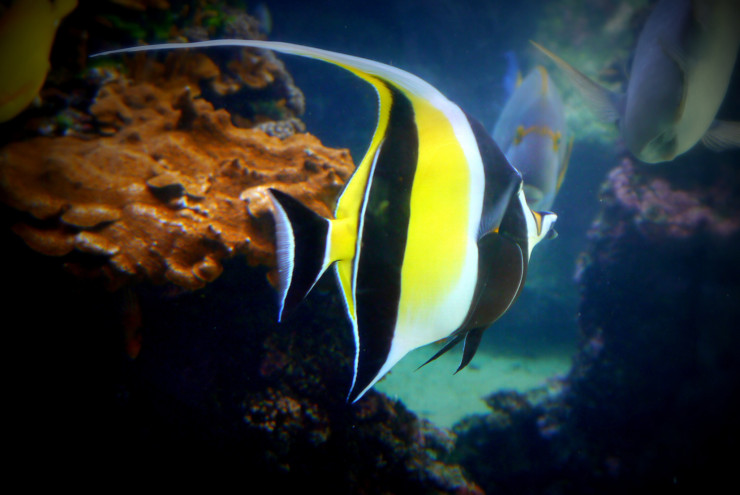
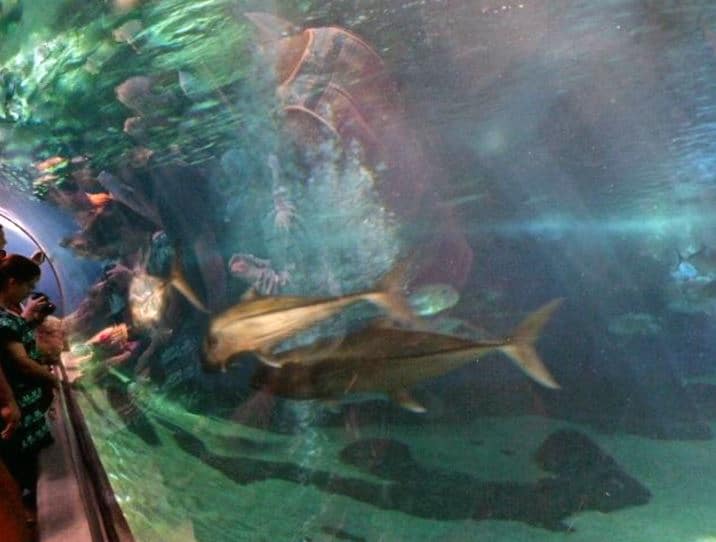
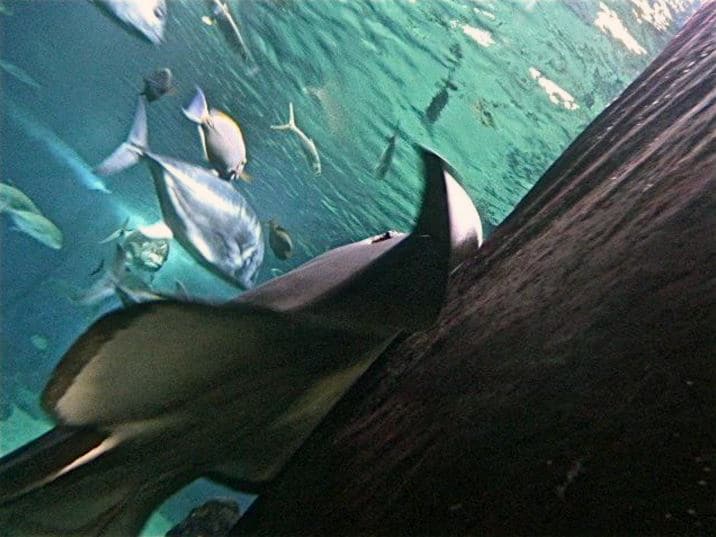
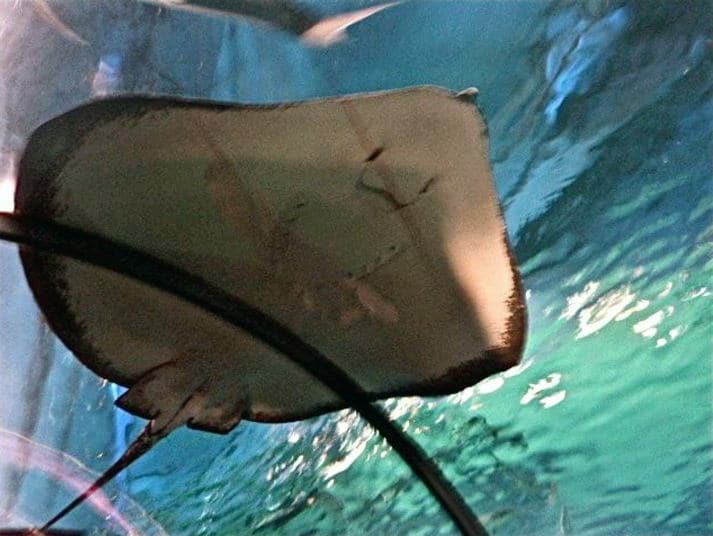
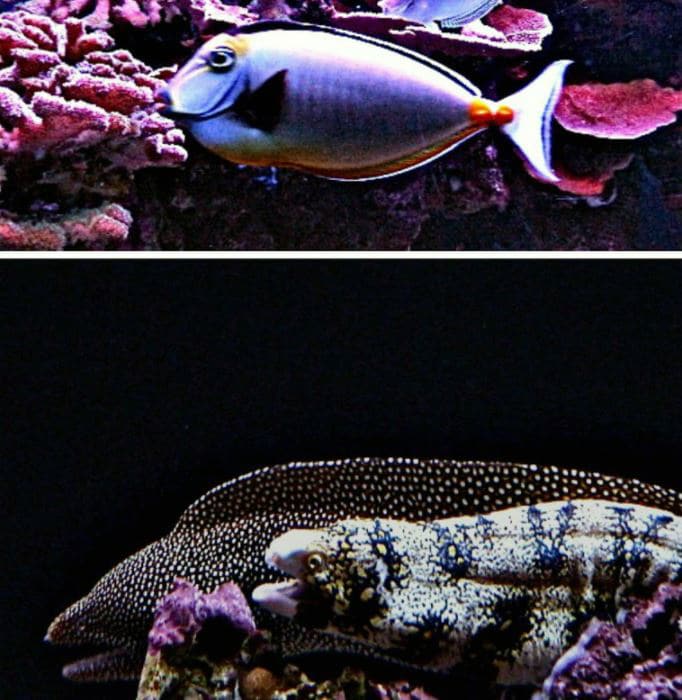
Megan Willome says
Laurie, this is so vivid. I love how you used the specific details of the aquarium, particularly the tunnel, to tell the larger story.
Laurie Klein says
Megan, thank you! I’m glad the story came alive for you through the scene’s details. It’s such a strange and fantastic space! The more I thought about it once we were home again, the more it related to bigger issues we had to face. Almost like I needed to be there to be (somewhat) prepared for what was coming, if that makes sense.
Megan Willome says
Makes perfect sense, Laurie.
Sandra Heska King says
Oh, wow, Laurie! What Megan said. I’m glad you got to experience this before you and the Dreamer entered your own tunnel.
And thanks for the reminder to “fingertip to fingertip, one fathom—embrace it all.”
P.S. Looking up, rays always look like they are smiling down on you. (I got splashed by one leaping past my kayak last month. I wonder if it was smiling at my surprise. Later I wondered, with a little anxiety, what I would have done if it had landed in my boat.)
Laurie Klein says
Sandra, we’re both grateful for the timing too.
Crazy-weird-wonders, those rays. I didn’t know they can leap clean out of the water. My first thought on your P.S.: Yikes! Send in the Coast Guard! Second thought: The stranded ray molding itself to your kayak’s bow, while sliding its spooky eyes back and forth, thinking “How’d I end up here?”
P.S. Thanks so much for sharing the piece on FB. 🙂
Monica Sharman says
Packed, humid, exciting. Yeah, I guess that’s one way to summarize Maui in general!
Laurie, thank you for this. I especially appreciated the questions:
“Who can fathom how this plastic tunnel withstands seawater’s monumental weight?”
“But who worries when portly tuna shaped like blockbuster bombs surge past?”
“What would it be like to gaze at one’s world—despite being confined—wide-eyed all day, every day?”
“
Laurie Klein says
Monica, thank you for sharing the questions that struck you. That’s such an interesting way to read. Makes me want to try it next time.
I hadn’t thought about the 3-word description ringing true for the whole island. Sounds like you’ve been there a time or two. We hope to go back one day. Meanwhile, I’m going to refocus on the third question you mentioned and try to stay wide-eyed today. 🙂
DIane says
Visiting the aquarium was a highlight when we went to Maui, your writing brought back the depth of beauty and wonder at viewing up close an array of sea creatures. What added richness to draw from as you were hit with an extreme diagnosis, thank you for making it meaningful this way.
Laurie Klein says
Diane, oh I am glad the piece took you back to your own delightful experience! Thanks for telling me.
I am continually amazed at how often we can find messages and meaning in what we experience at the time plus other levels of meaning afterward, deriving really specific encouragement to press on. So often, since the grueling yet miraculous surgery, Dreamer and I have marveled at the timing and gift of that trip.
Bethany Rohde says
You bring us right beside you as you experience the exotic wonders and surreal frights in the aquarium (and elsewhere).
Like how you weave “fathom” throughout this piece. I keep thinking of the image: “A gaping boy stretches out his arms.” (I wonder what the ancients would have called the wingspan of a child.)
There’s certainly much in life to gape at. Lovely to see how you acknowledge both the “lovable green sea turtles,” and the “creepy Moray eels,” and still keep your arms—and eyes—open.
Laurie Klein says
Bethany, thanks for diving in with me!
Now I want to write a poem that springs from your musing line: “I wonder what the ancients would have called the wingspan of a child.” Talk about an intriguing question. The universality of “exotic wonders” and “surreal frights” grabs me too. Thank you for widening my gaze. 🙂
Sharon A Gibbs says
Laurie, I love how you wove these two stories together, and the sprinkling of prose that seems to parallel parts of your personal story.
Some lines that spoke loudest to me…
Sharks surround us.
We breathe in menace
and our reflections morph.
and
Is that an eel, or an air hose?
My camera’s a held breath
For me, it parallels how life circumstances can hold this same power over us.
Fathomless, indeed.
Beautiful piece.
P.S. I hope this finds your husband well.
Laurie Klein says
Sharon, thank you for your good wishes for my husband, who is recovering slowly but surely.
I’m grateful you mentioned lines that were potent for you. It’s enlightening to hear what is working well. I’m a sucker for subtext. 🙂
Thanks to your comment, I’ve just had an aha! I’ve liked braiding things together since childhood days of making clover chains, trying to neatly work in all the little stems, laying in the next blossom at the right spot. Writing toward discovery, with no ending in mind—even though it takes me longer and involves loose ends, the inevitable awkward joinings, and alternately feeling stymied, then excited over an unexpected connection—makes me happy. And, when it all links up, extra alive.
Maybe I better write about that next . . .